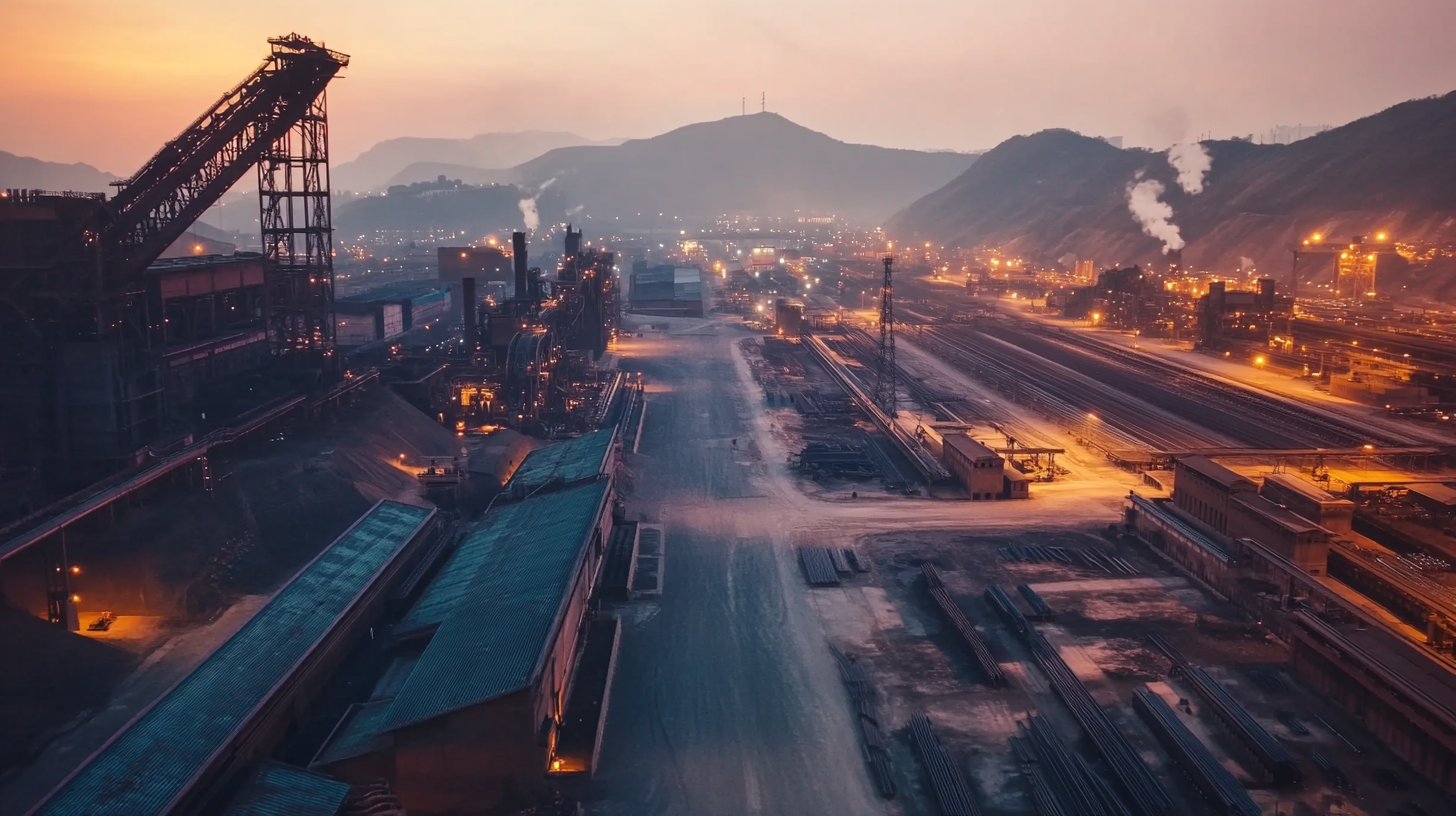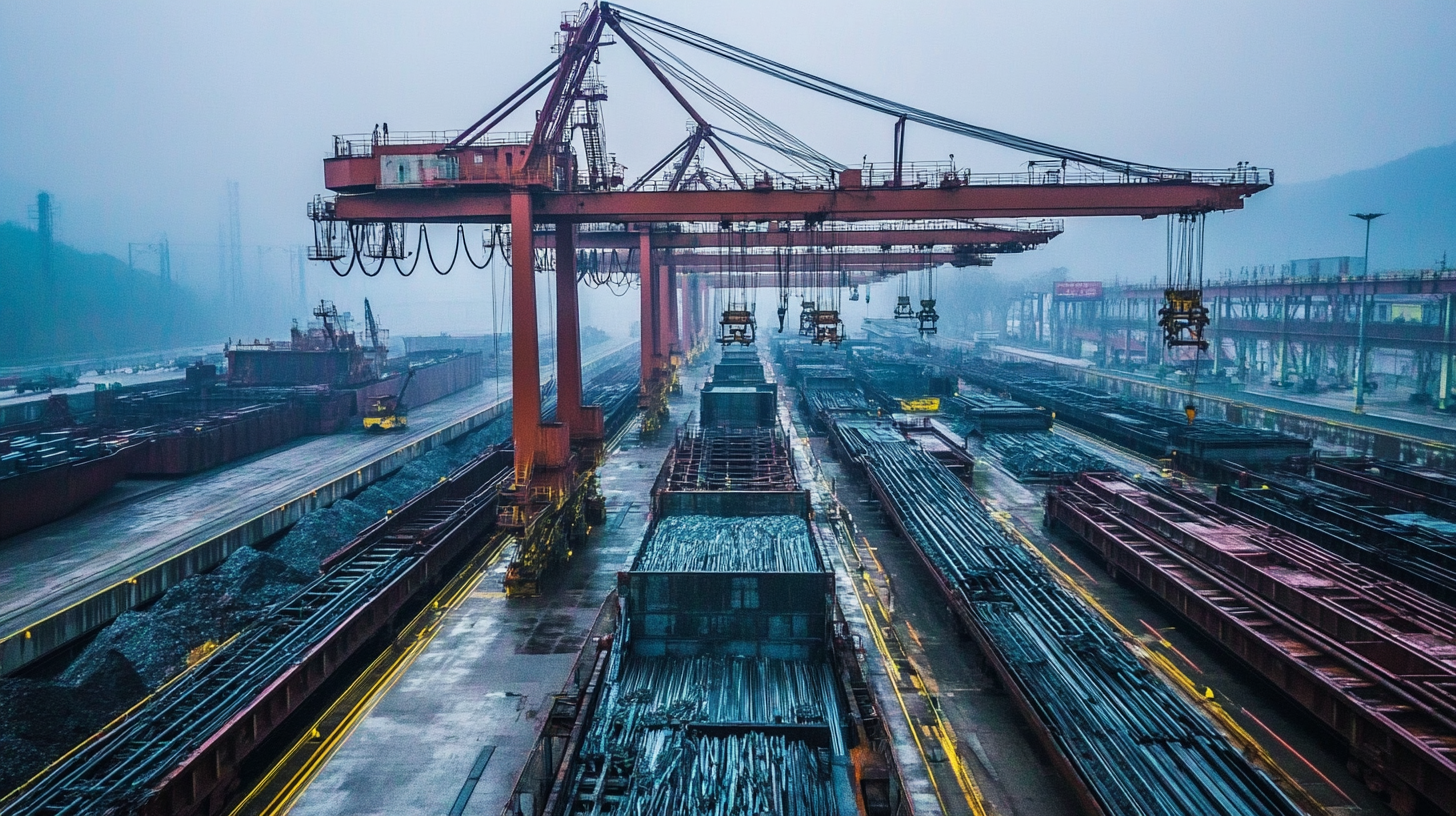Leave Your Message
In the complex landscape of international trade, the Ferro Silicon Alloy industry in China has emerged as a surprising success story amidst escalating US-China trade tensions. As both nations grapple with reciprocal tariffs, many sectors are feeling the strain; however, China's ability to adapt and innovate within this challenging environment has allowed its Ferro Silicon Alloy manufacturing to not only survive but to thrive. The strategic positioning of this industry, coupled with effective supply chain management and a focus on domestic and international markets, highlights the resilience and tenacity of Chinese manufacturers. This blog will explore the key strategies employed by the Ferro Silicon Alloy industry, delving into how it navigates tariff challenges, maintains competitiveness, and continues to grow against the backdrop of heightened trade barriers.

The escalating US-China trade tensions have placed significant strain on industries, yet some sectors, like China's ferro silicon alloy industry, have found ways to navigate these turbulent waters. The recent tariff challenges, coupled with a fragile trade truce, underscore the complexities of the global trade landscape. As both nations engage in renewed negotiations, the spotlight remains on how these discussions will reshape tariffs and influence market dynamics.
China has recognized the pressing need to strike a balance between retaliatory measures and economic stability. The alarm over tariffs has sparked a reconsideration of strategies, with Chinese officials keenly aware of the risks posed by increasing economic isolation. The recent court rulings in the US that blocked many of the tariffs imposed during the previous administration have created a ripple effect, offering both relief and uncertainty to global markets. These developments highlight the precariousness of the trade relationship—while immediate tensions may start to ease, deep structural issues and strategic rivalries still loom large on the horizon.
The ferro silicon alloy industry in China exemplifies remarkable resilience in the face of ongoing U.S.-China trade tensions, particularly amidst the adverse effects of tariffs. Companies within this sector have innovatively adapted their strategies to navigate the complexities of global trade dynamics, ensuring continued growth and competitiveness. By refining their manufacturing processes and exploring new markets, these businesses are not only mitigating the impact of tariffs but also optimizing their product offerings to meet evolving global demands.
Moreover, similar to the adaptive measures seen in regions like Sarawak, the ferro silicon alloy industry has demonstrated a proactive approach to economic challenges. By investing in technology and diversifying supply chains, companies are enhancing their capacity to respond to fluctuating market conditions. This adaptability underscores the collective determination of the industry to thrive, showcasing how resilience can lead to strategic advantages even in adversity. As the market continues to evolve, the lessons learned from these challenges may shape the future trajectory of the ferro silicon alloy sector on a global scale.

The ongoing US-China trade tensions have posed significant challenges for the ferro silicon alloy industry in China, yet manufacturers are showcasing remarkable resilience through innovative strategies. To navigate the complex tariff landscape, many companies are investing in advanced manufacturing technologies that enhance productivity and reduce costs. By adopting automation and optimizing supply chains, businesses are able to maintain competitive pricing, making their products appealing even under strained trade conditions.
Tips for success in this climate include fostering strong relationships with international clients and exploring alternative markets to diversify export opportunities. Additionally, manufacturers should keep abreast of policy changes and potential tariff adjustments. Staying informed allows them to swiftly adjust strategies, ensuring compliance while minimizing financial impact.
Furthermore, a focus on sustainability can serve as a differentiator in the market. By implementing environmentally friendly practices and promoting eco-conscious production methods, companies not only align with global trends but also attract environmentally aware consumers. Emphasizing innovation and sustainability can create a strong competitive edge in an increasingly challenging trade environment.
This chart illustrates the production volume of Ferro Silicon Alloy in China over the past five years, showcasing innovative strategies implemented by manufacturers to overcome trade barriers amidst US-China trade tensions.
Amidst ongoing US-China trade tensions, the demand for ferro silicon alloys is witnessing a significant shift, reflecting broader market dynamics. According to a recent report by Grand View Research, the global ferro alloys market was valued at approximately $19.17 billion in 2020, with projections suggesting a growth rate of 5.4% from 2021 to 2028. This growth can largely be attributed to the increasing demand from the steel industry, where ferro silicon alloys are crucial for deoxidizing steel and improving its mechanical properties. Despite trade barriers, China's ferro silicon alloy production remains resilient, capturing a significant share of the global market.
Moreover, as tariffs and import quotas reshape trade relations, Chinese producers are adapting by diversifying their export markets. Data from the China Ferroalloy Industry Association indicates that in 2022, exports of ferro silicon from China exceeded 1 million tons, with substantial growth in shipments to Southeast Asia and Europe. This shift not only illustrates the agility of the Chinese ferro silicon alloy industry in responding to external pressures but also highlights a broader trend towards regional trade realignment. As global steel demand continues to rise, the strategic maneuvering of ferro silicon producers positions them favorably to thrive despite geopolitical challenges.
| Year | US Tariffs on Ferro Silicon Alloy (%) | China's Export Volume (MT) | US Import Volume (MT) | Market Demand Shift (Increase/Decrease) |
|---|---|---|---|---|
| 2018 | 0% | 200,000 | 150,000 | - |
| 2019 | 25% | 180,000 | 120,000 | Decrease |
| 2020 | 25% | 220,000 | 100,000 | Increase |
| 2021 | 25% | 250,000 | 110,000 | Increase |
| 2022 | 30% | 240,000 | 90,000 | Decrease |
| 2023 | 30% | 260,000 | 95,000 | Increase |
The ferro silicon alloy industry, particularly in China, faces significant hurdles due to ongoing US-China trade tensions. Yet, it has demonstrated remarkable resilience, signaling promising prospects for the future. According to a recent industry report, China's ferro silicon output is expected to reach approximately 6 million tons by 2025, making up over 60% of global production. This dominance not only reflects China's capacity but also its strategic positioning to absorb and adapt to external pressures, including tariffs and trade restrictions.
**Tips**: To navigate these ongoing challenges effectively, companies should diversify their supply chains and engage in proactive market analysis. Additionally, investing in R&D can foster innovation and improve production efficiency, enabling firms to maintain a competitive edge despite market fluctuations.
Focusing on sustainable practices will also be crucial for the ferro silicon industry's future growth. As environmental regulations become increasingly stringent, companies that prioritize eco-friendly production methods can enhance their appeal in international markets. Adopting cleaner technologies and adhering to green compliance standards will not only mitigate risks associated with trade tensions but will also attract environmentally conscious investors and consumers.

